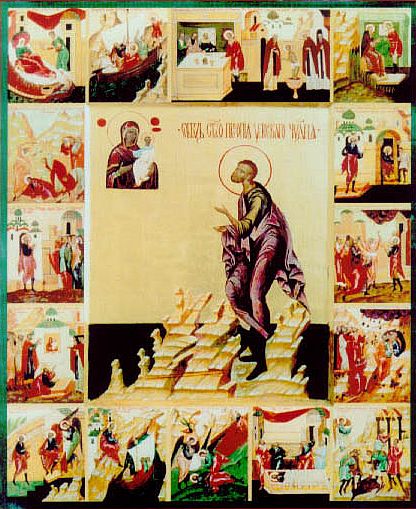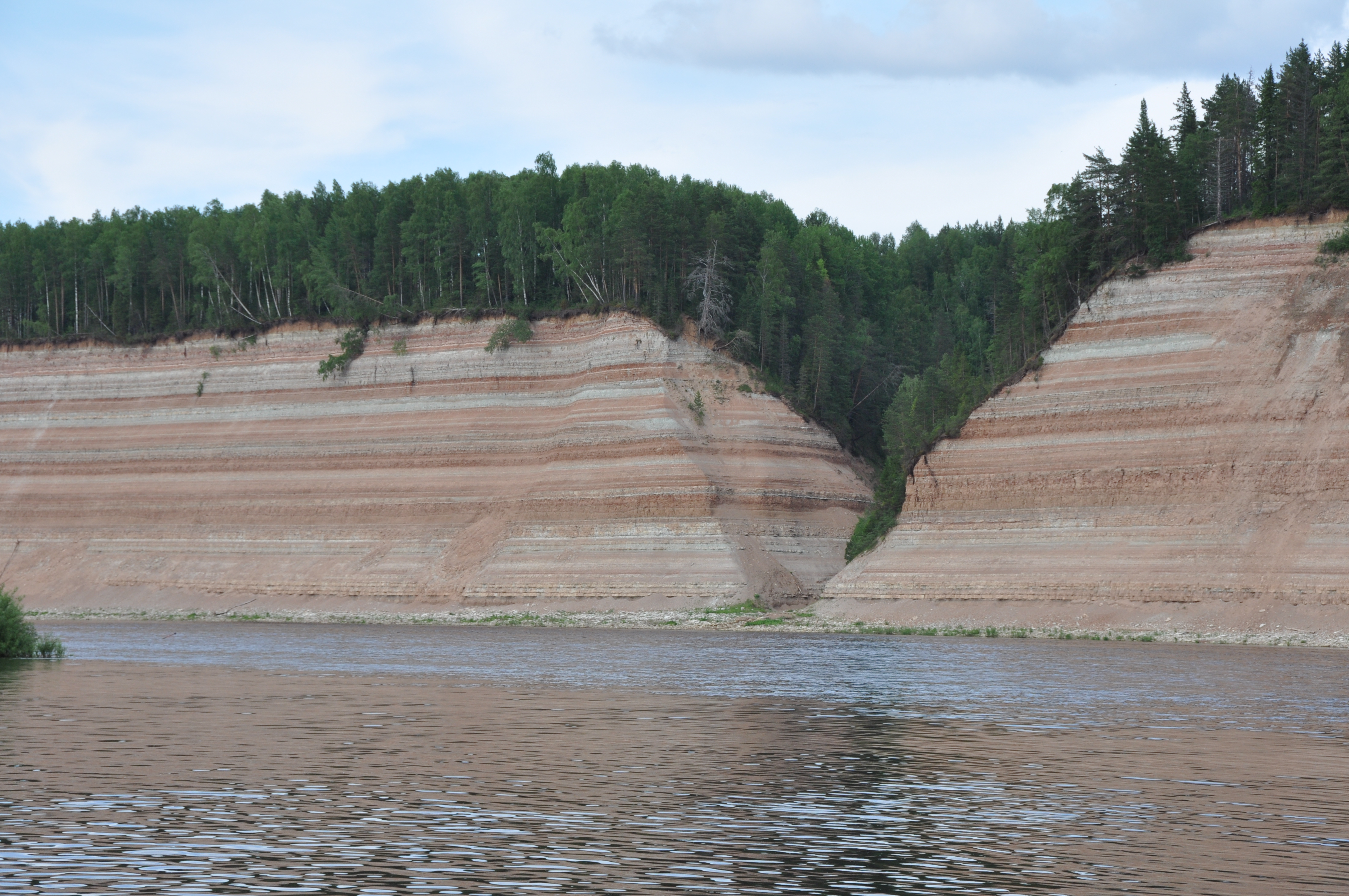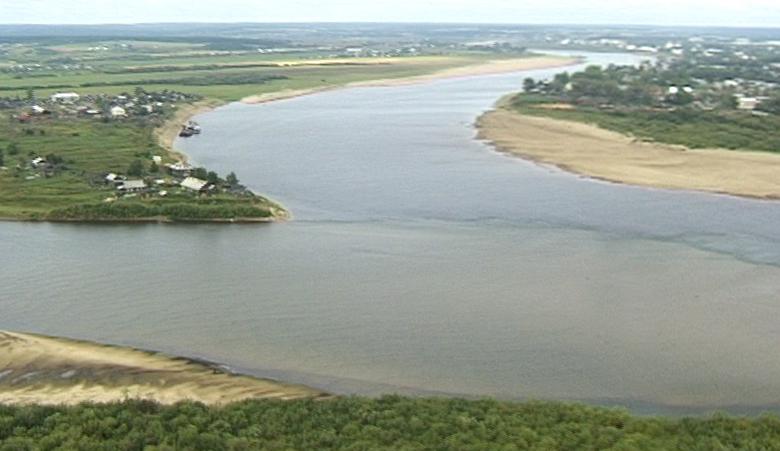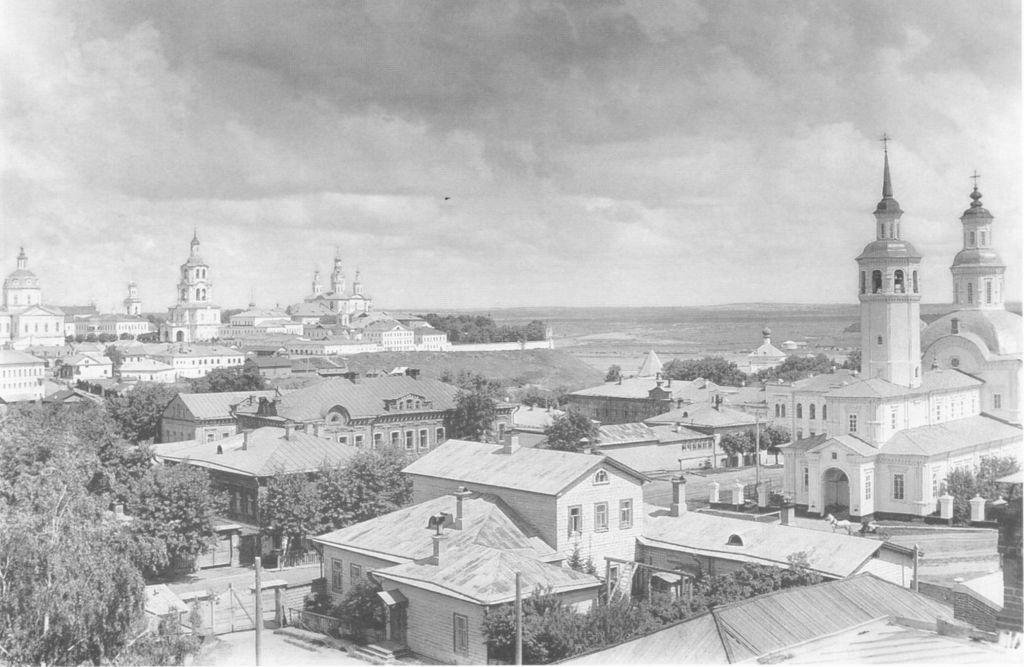|
Ustyug
Veliky Ustyug (russian: Вели́кий У́стюг) is a town in Vologda Oblast, Russia, located in the northeast of the oblast at the confluence of the Sukhona and Yug Rivers. As of the 2010 Census, its population was 31,665. Veliky Ustyug has a great historical significance and was one of the major cities of the Russian North. It preserved some of the past urban structure and many of the architectural monuments. It has lost its former leading role and is nowadays mostly known for tourism. Location and etymology Veliky Ustyug is close to the confluence of the Sukhona (flowing from the west) and the Yug (from the south) rivers. Downstream from this confluence the rivers form a single waterway known as the Northern Dvina, sometimes referred to as the Little Northern Dvina. The historical center of the town is on the left (high) bank of the Sukhona and, in contrast to many historical Russian towns, there is an embankment along the Sukhona. Dymkovskaya Sloboda and Tro ... [...More Info...] [...Related Items...] OR: [Wikipedia] [Google] [Baidu] |
Velikoustyugsky District
Velikoustyugsky District (russian: Великоу́стюгский райо́н) is an administrativeLaw #371-OZ and municipalLaw #1109-OZ district (raion), one of the twenty-six in Vologda Oblast, Russia. It is located in the northeast of the oblast and borders with Kotlassky District of Arkhangelsk Oblast in the north, Luzsky District of Kirov Oblast in the east, Podosinovsky District of Kirov Oblast in the southeast, Kichmengsko-Gorodetsky District in the south, Nyuksensky District in the west, and with Ustyansky District of Arkhangelsk Oblast in the northwest. The area of the district is . Its administrative center is the town of Veliky Ustyug (which is not administratively a part of the district). Population: 22,210 ( 2002 Census); Geography In Veliky Ustyug, the Sukhona and Yug Rivers form the Northern Dvina, one of the biggest rivers in Europe. Upstream from the town of Kotlas, and especially within the limits of the district, the Northern Dvina is sometimes refe ... [...More Info...] [...Related Items...] OR: [Wikipedia] [Google] [Baidu] |
Vologda Oblast
Vologda Oblast ( rus, Вологодская область, p=vəlɐˈɡotskəjə ˈobləsʲtʲ, r=Vologodskaya oblast, ) is a federal subject of Russia (an oblast). Its administrative center is Vologda. The Oblast has a population of 1,202,444 ( 2010 Census). The largest city is Cherepovets, the home of the Severstal metallurgical plant, the largest industrial enterprise in the oblast. Vologda Oblast is rich in historic monuments, such as the Kirillo-Belozersky Monastery, Ferapontov Monastery (a World Heritage Site) with the frescoes of Dionisius, medieval towns of Velikiy Ustyug and Belozersk, and baroque churches of Totma and Ustyuzhna. Large reserves of wood and fresh water are the main natural resources. History The area of Vologda Oblast was settled by Finnic peoples in prehistory, and most of the toponyms in the region are in fact Finnic. Vepsians, who still live in the west of the oblast, are the descendants of that population. Subsequently, the area ... [...More Info...] [...Related Items...] OR: [Wikipedia] [Google] [Baidu] |
Northern Dvina
The Northern Dvina (russian: Се́верная Двина́, ; kv, Вы́нва / Výnva) is a river in northern Russia flowing through the Vologda Oblast and Arkhangelsk Oblast into the Dvina Bay of the White Sea. Along with the Pechora River to the east, it drains most of Northwest Russia into the Arctic Ocean. It should not be confused with Western Dvina. The principal tributaries of the Northern Dvina are the Vychegda (right), the Vaga (left), and the Pinega (right). Etymology According to the Max Vasmer's ''Etymological Dictionary,'' the name of the river has been taken from the Western Dvina. The toponym Dvina does not stem from a Uralic language; however, its origin is unclear. Possibly it is an Indo-European word which used to mean ''river'' or ''stream''. In the Komi language, the river is called Вы́нва / Výnva from ''vyn'' "power" and ''va'' "water, river" hence "powerful river". Physical geography River basin The length of the Northern Dvina ... [...More Info...] [...Related Items...] OR: [Wikipedia] [Google] [Baidu] |
Sukhona River
The Sukhona (russian: Су́хона) is a river in the European part of Russia, a tributary of the Northern Dvina. The course of the Sukhona lies in Ust-Kubinsky, Sokolsky, Mezhdurechensky, Totemsky, Tarnogsky, Nyuksensky, and Velikoustyugsky Districts of Vologda Oblast in Russia. It is long, and the area of its basin . The Sukhona joins the Yug near the town of Veliky Ustyug, forming the Northern Dvina, one of the biggest rivers of European Russia. The biggest tributaries of the Sukhona are the Vologda (right), the Lezha (right), the Pelshma (left), the Dvinitsa (left), the Tolshma (right), the Tsaryova (left), the Uftyuga (left), and the Gorodishna (right). Etymology According to the Max Vasmer's Etymological Dictionary, the name of the river originates from the Russian and most likely means "a river with a dry (hard) bottom". Physical geography The river basin of the Sukhona comprises vast areas in the central and eastern parts of Vologda Oblast, in the sout ... [...More Info...] [...Related Items...] OR: [Wikipedia] [Google] [Baidu] |
Troitse-Gledensky Monastery
Troitse-Gledensky Monastery (russian: Троице-Гледенский монастырь) is a former Russian Orthodox monastery founded in the 12th century. The monastery is located in the village of Morozovitsa of Velikoustyugsky District in the north-east of Vologda Oblast, at the confluence of the Sukhona and the Yug Rivers, close to the town of Veliky Ustyug. The monastery ensemble currently belongs to Velikoustyugsky Museum of History, Art, and Architecture. History The monastery is located at the place where previously a fortress of Gleden was built in the end of the 12th century by Vsevolod the Big Nest, the Grand Prince of Vladimir. Gleden was the predecessor of Veliky Ustyug and was destroyed in the 15th century during wars between Russian princes. The early history of the monastery is not well documented, however, it is assumed that the monastery was founded at the same time as the fortress, but survived the civil war of the 15th century. Troitse-Gledensky monastery ... [...More Info...] [...Related Items...] OR: [Wikipedia] [Google] [Baidu] |
Yug River
The Yug (russian: Юг) is a river in Kichmengsko-Gorodetsky, Nikolsky, and Velikoustyugsky Districts of Vologda Oblast and in Podosinovsky District of Kirov Oblast in Russia. It is long, and the area of its basin is . The Yug joins the Sukhona near the town of Veliky Ustyug, forming the Northern Dvina, one of the biggest rivers of European Russia. The principal tributaries of the Yug are the Sharzhenga (left), the Kichmenga (left), the Yontala (right), the Pushma (right), and the Luza (right). Most of the course of the Yug runs through the Northern Ridge, and the Yug is one of the biggest rivers crossing the ridge. The name of the river is identical to the Russian word for "south", but has Finno-Ugric origins and originates from the Komi word ''ju'', which means "water". It is cognate with ''joki'' "river" in the most river names in Finland and further with Oka, Vuoksi, Vakh, Yogan, etc. in Russia. The towns of Veliky Ustyug and Nikolsk, as well as the district ... [...More Info...] [...Related Items...] OR: [Wikipedia] [Google] [Baidu] |
Totma
Totma (russian: То́тьма) is a types of inhabited localities in Russia, town and the administrative center of Totemsky District in Vologda Oblast, Russia, located on the left bank of the Sukhona River at its confluence with the Pesya Denga River, Pesya Denga, northeast of Vologda, the administrative center of the oblast. Population: History It was first mentioned in the chronicles in 1137 (according to other sources—in 1138) as the ''pogost'' of Todma (). It was founded by Novgorod Republic, Novgorodians, who used the Sukhona River, Sukhona as the main waterway leading to the north and eventually to the White Sea. The name "Totma" is nevertheless of Finno-Ugric languages, Finno-Ugrian origin, which, together with archeological discoveries, indicates that an earlier settlement on the site of the present town was established by the Volga Finns#Merya, Merya people. The original ''pogost'' was located downstream of the current location, close to the mouth of the Staraya Tot ... [...More Info...] [...Related Items...] OR: [Wikipedia] [Google] [Baidu] |
Stephen Of Perm
Stephen of Perm (Russian: Стефан Пермский, also spelled Stephan, kv, Перымса Степан; 1340–1396) was a fourteenth-century painter and missionary credited with the conversion of the Komi to Christianity and the establishment of the Bishopric of Perm'. Stephen also created the Old Permic script, which makes him the founding-father of Permian written tradition. "The Enlightener of Perm" or the "Apostle of the Permians", as he is sometimes called, is commemorated by the Catholic and Orthodox Churches on April 26. Life Stephen was probably from the town of Ustiug. According to a church tradition, his mother was a Komi woman and his father was a Russian man. Stephen took his monastic vows in Rostov, where he learned Greek and learned his trade as a copyist.''loc. cit.'' In 1376, he voyaged to lands along the Vychegda and Vym rivers, and it was then that he engaged in the conversion of the Zyriane (Komi peoples). Rather than imposing the Latin or Churc ... [...More Info...] [...Related Items...] OR: [Wikipedia] [Google] [Baidu] |
Vladimir Atlasov
Vladimir Vasilyevich Atlasov or Otlasov ( or Отла́сов; between 1661 and 1664 – 1711) was a Siberian Cossack who was the first Russian to organize systematic exploration of the Kamchatka Peninsula. Atlasov Island, an uninhabited volcanic island off the southern tip of Kamchatka, and the Atlasova volcano are named after him. Biography Atlasov was born in Veliky Ustyug. The first mention of him in the historical records comes from around 1682, when he was collecting Yasak on the Aldan River and one of the Uda rivers. In 1695 the voyevoda of Yakutsk appointed Atlasov prikazshchik of Anadyrsk. The Russians here had heard reports of a 'Kamchatka River' to the south and were already collecting yasak on the headwaters of the rivers that flow south toward Kamchatka. At least one of them had followed the Penzhina river to the Sea of Okhotsk. In 1696 he sent Luka Morozko south to explore. Morozko got as far south as the Tegil river on the west side of the peninsula and returned ... [...More Info...] [...Related Items...] OR: [Wikipedia] [Google] [Baidu] |
Kirov, Kirov Oblast
Kirov ( rus, Ки́ров, p=ˈkʲirəf, a=Ru-Киров.ogg) is the largest city and administrative center of Kirov Oblast, Russia. It is located on the Vyatka River in European Russia, 896 km northeast of Moscow. Its population was 518,348 in 2020. Kirov is a historical, cultural, industrial, and scientific center of Priural'e (territory on the west side of the Ural Mountains); place of origin for Dymkovo toys; the most eastern city founded during the times of Kievan Rus'. The city also had the names of Khlynov (, from 1457 to 1780), and Vyatka (, until 1934). History Principality and republic The native Slavic tribe of Central Russia and Volga regions, the Vyatichis (also called Viatichi), mixed here with the Novgorodian Slovenes and Finno-Ugric people. According to the medieval chronicles the first Russian settlements in the area appeared in 12th century. Kirov itself was first mentioned (as Vyatka) for the first time in 1374 when Novgorod ushkuyniks plun ... [...More Info...] [...Related Items...] OR: [Wikipedia] [Google] [Baidu] |
Semyon Dezhnyov
Semyon Ivanovich Dezhnyov ( rus, Семён Ива́нович Дежнёв, p=sʲɪˈmʲɵn ɪˈvanəvʲɪtɕ dʲɪˈʐnʲɵf; sometimes spelled Dezhnyov; c. 1605 – 1673) was a Russian explorer of Siberia and the first European to sail through the Bering Strait, 80 years before Vitus Bering did. In 1648 he sailed from the Kolyma River on the Arctic Ocean to the Anadyr River on the Pacific. His exploit was forgotten for almost a hundred years and Bering is usually given credit for discovering the strait that bears his name. Biography Dezhnyov was a Pomor Russian, born about 1605, possibly in the town of Veliky Ustyug or the village of Pinega. According to the anthropologist Lydia T. Black, Dezhnyov was recruited for Siberian service in 1630, possibly as a service man or government agent. He served for eight years in Tobolsk and Yeniseisk, and then went to Yakutia in 1639, or possibly earlier. He is said to have been a member of the Cossack detachment under Beketov, who is ... [...More Info...] [...Related Items...] OR: [Wikipedia] [Google] [Baidu] |
Yerofey Khabarov
Yerofey Pavlovich Khabarov or Svyatitsky (russian: Ерофе́й Па́влович Хаба́ров (Святи́тский), ; the first name is often spelled Ярофей (Yarofey) in contemporary accounts; 1603 – after 1671), was a Russian entrepreneur and adventurer, best known for his exploring the Amur river region and his attempts to colonize the area for Russia. For background see Russian–Manchu border conflicts. The major Russian city of Khabarovsk, as well as the small town and railway station Yerofey Pavlovich (located on the Trans-Siberian railroad in Amur Oblast) bear his name. A native of the Veliky Ustyug area in the northern European Russia, Khabarov was a manager for the Stroganovs at the saltworks in Solvychegodsk. In 1625, Khabarov sailed from Tobolsk to Mangazeya. Three years later, he left the town with his expedition and reached the Kheta River (eastern part of Taimyr). In 1630, Khabarov took part in a voyage from Mangazeya to Tobolsk. In 16 ... [...More Info...] [...Related Items...] OR: [Wikipedia] [Google] [Baidu] |







